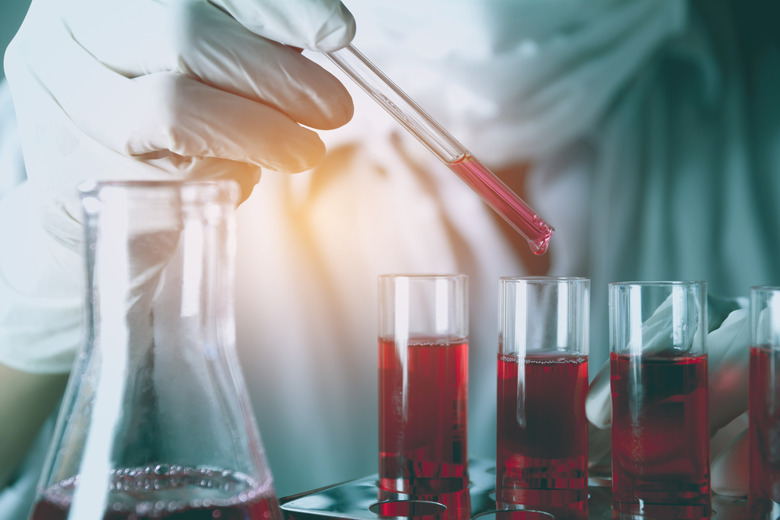How To Calculate The Percent Ionization
Strong acids and bases ionize completely in water, meaning that the hydrogen ions from each acidic molecule or the hydroxide ions from each alkaline molecule separate or are donated. However, weak acids, such as hydrofluoric acid, and weak bases, such as ammonia, ionize in limited amounts in water. Calculating the percentage of dissociated — that is, ionized — acid or base in water is fairly easy, and it can help you to understand the behavior of certain weak acids and bases.
Step 1
Determine the amount of dissociated (ionized) acid or base in the solution. Often, this information is given in the problem. If you are in a more advanced class, you must calculate the amount hydrogen or hydroxide ions using experimental research or formula chains.
Step 2
Divide the amount of dissociated acid or base, which is given in units of moles per liter, by the initial concentration of the acid or base, which is also in moles per liter. Most often, you know the initial concentration from the label on the bottle from which you poured the chemical, or from the problem.
Step 3
Multiply this figure by 100. This is the percentage that represents the degree of ionization.
TL;DR (Too Long; Didn't Read)
Often you must use a series of formulas to find the percent dissociation, because the direct information was not given to you. For example, you may know the acid dissociation constant of an acid but not the amount in moles per liter of dissociated acid.
Cite This Article
MLA
Quinn, Donny. "How To Calculate The Percent Ionization" sciencing.com, https://www.sciencing.com/calculate-percent-ionization-7566159/. 13 March 2018.
APA
Quinn, Donny. (2018, March 13). How To Calculate The Percent Ionization. sciencing.com. Retrieved from https://www.sciencing.com/calculate-percent-ionization-7566159/
Chicago
Quinn, Donny. How To Calculate The Percent Ionization last modified March 24, 2022. https://www.sciencing.com/calculate-percent-ionization-7566159/
